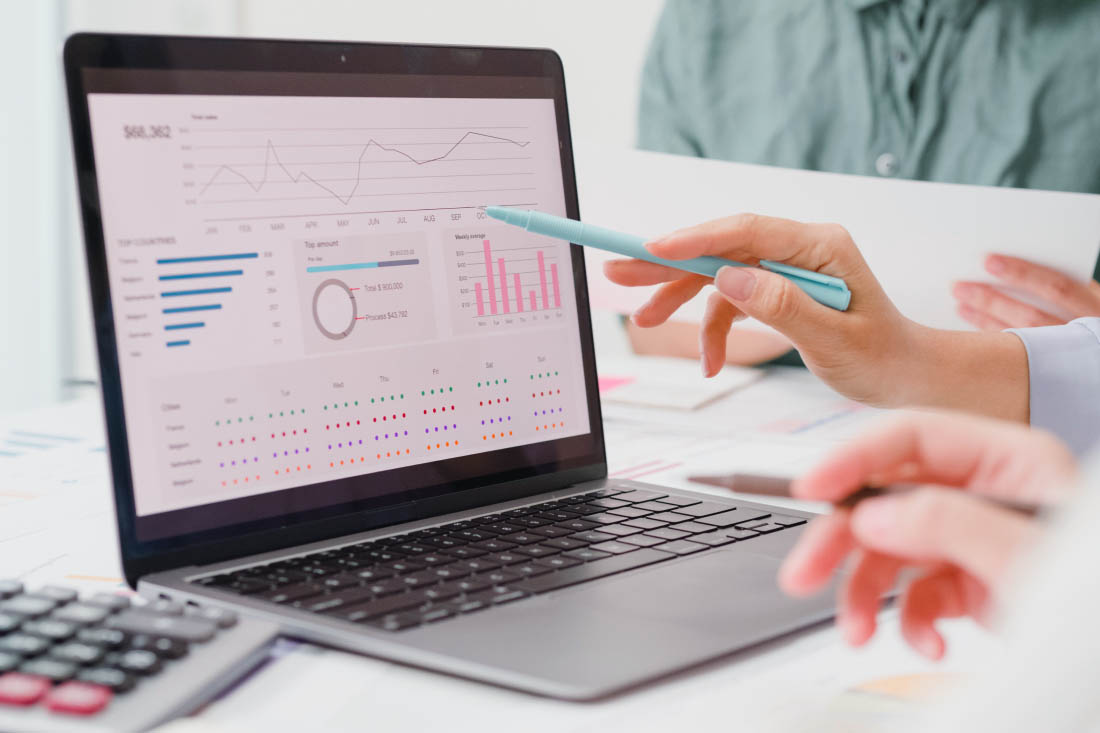The short answer is “yes” — but only if you do it right.
While overall employee monitoring software usage has exploded — global demand is up 75% — some employers remain hesitant. This is usually due to concerns related to privacy, transparency and trust.
If you’re still on the fence, we have good news: The days of using employee monitoring to micromanage are long gone. Today’s tools are built to enhance employee well-being, increase productivity and even reduce operational costs.
Let’s look at what this means for your business.
Different types of employee monitoring
There are several methods for monitoring employees, though not all are created equal. For example, it’s OK use:
- Location insights: Seeing where people are most productive empowers you to create the right hybrid or remote work strategy for your workforce.
- Application usage data: Understanding which of your apps employees actually use makes it easy to reduce SaaS costs.
- Productivity reports: Tracking work hours and related metrics, such as the amount of time spent on productive activities versus busywork, lets you know when it’s time to address issues.
- General activity: Seeing which websites and social media platforms your teams frequent is a good way to stay ahead of potential security risks. These reports also show you when it’s time to block risky URLs or enforce internet usage policies.
The above are all legitimate business reasons for monitoring employees. In contrast, it’s important to stay away from more intrusive practices. This includes:
- Live video surveillance: Using cameras to visually monitor employees’ activities in real time is not recommended. Office security cameras are one thing — but using webcams to constantly watch remote employees breeds mistrust.
- Keylogging: Recording the keys people type on their keyboards provides little (if any) business value. And because keyloggers capture sensitive information like passwords and credit card numbers, it also increases your risk of a data breach.
- Personal exchanges: Monitoring employees’ personal personal data and conversations isn’t just bad practice — it may also expose you to costly Electronic Communications Privacy Act (ECPA) penalties.
When evaluating solutions, remember the goal is not to monitor employees. At least, not in the traditional sense. While privacy laws vary from region to region, best practice says you should use trust and transparency as your primary guide. The right employee monitoring platform will equip you with the insights you need to support productivity and well-being — no more, no less — so you can build a happier, more engaged workforce.
7 reasons employers should monitor their employees
Like any workforce tool, there are pros and cons to employee monitoring. But while some employees may be uncertain at first, being open about why you’re using employee monitoring software — and how you plan to use it — goes a long way in easing those concerns.
1. Increase productivity
Small businesses and enterprise organizations alike rely on employee monitoring to increase workplace productivity. Why? Because it removes the guesswork from important decisions and uncovers issues that would otherwise fly under the radar. Here at ActivTrak, we’ve seen organizations experience as much as $4.2 million in productivity gains.
Wondering if people are more productive at home or in the office? Use location insights to find out. Worried some employees work too long or too often? Use your employee monitoring data to see who’s at risk of burnout. Employee monitoring also helps you balance workloads, optimize your headcount and reduce operational expenses.
2. Improve processes
Every aspect of your business involves a process. HR has a process for onboarding new hires, IT has a process for managing company devices and customer service has a process for handling requests. Each one is important, but if people add too many steps they become overly complicated and slow teams down.
Employee monitoring helps ensure this doesn’t happen. It allows you to optimize each process by revealing bottlenecks and showing how each change impacts productivity. Instead of trial-and-error, you’ll have change management data to guide you.
3. Fight disengagement
Employee disengagement is no joke. According to Gallup, disengaged employees cost the world $8.8 trillion in lost productivity. However, it’s hard to spot the outward signs of disengagement until it’s too late.
Employee monitoring helps with this too. You’ll be alerted to spikes in overtime, dips in performance and increases in unproductive activities — all indicators an overworked employee or team is at risk. In other words, employee monitoring makes it easy to spot disengagement with data. This allows you to step in and stop it before the employee becomes actively disengaged and impacts others.
4. Protect company data
The cost of a data breach has never been higher — IBM now puts the number at $4.88 million. To protect your data at every turn, implementing employee monitoring software is essential. It provides visibility into what’s happening with your data, making it easier to spot suspicious activities.
Monitoring employees allows your security team to set alarms when someone engages in unauthorized file sharing or tries to circumvent your security controls. Some organizations go a step further by customizing access to business apps, or determining who can access which tools based on location.
5. Reduce SaaS sprawl
More than half of IT professionals struggle with SaaS sprawl, even as organizations cut back on the number of apps in their tech stacks. They also struggle to protect sensitive data stored in apps, monitor for unsanctioned apps and keep costs in check. It’s a lot to handle. But thankfully, employee monitoring makes it much easier.
More specifically, SaaS management software tracks which tools are widely adopted, which licenses are unused and which apps fail to meet security requirements. These reports equip your team to optimize your tech stack quickly and efficiently — no guesswork involved.
6. Boost retention
Recent surveys show close to one-third of workers say job satisfaction has increased as a result of having their online activity monitored. Even more telling, an astounding 92% of employees are open to organizations collecting work-related data when the goal is to help improve performance and well-being. More than 60% also say they’re willing to exchange their work activity data for more-customized compensation, benefits and learning and development opportunities.
In other words: Employee monitoring is your ticket to lower turnover and higher retention. Successful companies use employee data to build flexible work policies, test the four-day workweek, identify underutilized employees who may be open to new opportunities — and much more.
7. Optimize remote work
Remote work is here to stay. But how do you know if you’re doing it right? Whether your employees work from home full-time or come to work on a hybrid schedule, employee monitoring is a great way to see which policies work best for your workforce.
You’ll see where people are most productive, and when, to help determine how often teams should come to the office — if at all. You’ll know when remote employees are overworked or underutilized, and understand which hours work best for various teams. Better yet, you can give people access to their own personal insights dashboards so they learn how to build healthier work habits when working remotely.
Implement employee monitoring with ActivTrak
With ActivTrak, it’s easy to get started with employee monitoring — for free. Our award-winning platform is packed with all the insights you need to monitor employees the right way. It’s why more than 9,500 organizations already use it to boost productivity, and why it rises to the top of ratings on both TrustRadius and G2.
Sign up for a free account to get started today!





